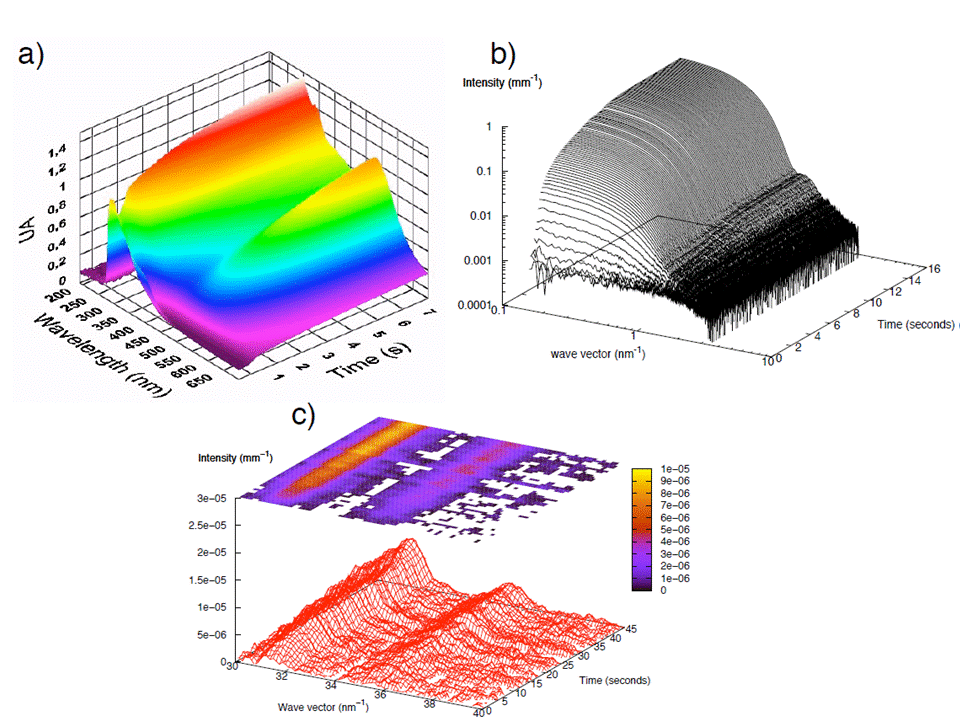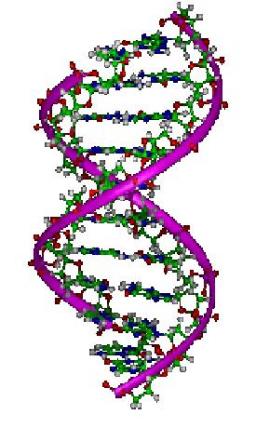2008
General objectives
We aim at understanding the microscopic mechanisms controlling the formation of nanoparticles. Different types of NPs are studied in the LIONS and among them gold NPs have already been the subject of several achieved PhD (B. Abécassis and F. Hubert) and on-going in-house studies (J. Han) and collaborative ones (S. Gomez from the Univiersity og Vigo). Our general approach is to consider that quantitative kinetic measurements of the size, size distribution and number of NPs with time together with the gold atoms speciation in solution (Au(III), Au(I) and Au-0)) can serve as a basis to develop a better understanding of the mechanisms involved.
The nucleation and growth mechanism of gold nanoparticles are followed at the millisecond time scale using different in situ techniques. Three different systems are presently studied : nanospheres in toluene (NST), nanorods in water (GNR) and nanospheres in water (NSW). The time scale range from one second (NSW) to 600 seconds (GNR). The sample environment are adapted to the time-scale involved. They are (i) a stopped for the most rapid synthesis, (ii) an home-made millifuidic set-up for water rapid systems and (iii) a simple flow through cell for the GNRs.
Three main synchrotron based techniques are used, SAXS WAXS and XANES both with a high time resolution. ESRF (ID02) and SOLEIL (SWING and ODE) have been intensively used to acquire a unique set of data during the nucleation and growth of these objects.
Our recent experimental and theoretical investigations dealing with model DNA double helices, composed of either adenine-thymine (A-T) or guanine-cytosine (G-C) base pairs and guanine quadruplexes shed some light on the excited states populated by photon absorption and their relaxation, energy transfer among bases and one-photon ionization. These studies revealed that the Franck-Condon excited states of DNA helices cannot be considered as the sum of their monomeric constituents because electronic coupling induces delocalization of the excitation over a few bases. Energy transfer takes place via intraband scattering in less than 100 fs. The fluorescence lifetimes of DNA helices detected by fluorescence upconversion and corresponding mainly to ππ* transitions are longer than that of an equimolar mixture of nucleotides; the only exception was observed for alternating G-C polymers. Moreover, nanosecond flash photolysis experiments showed that organization of bases within single and double helices may lead to a lowering of their ionization potential. Finally, the first determination regarding the time-scale needed for the formation of thymine dimers, the (6-4) adducts, was determined for the single strand (dT)20.
Know more
In the pyrochlore compounds R2Mo2O7, both rare earth R3+ and M4+ transition metal ions form a threedimensional network of corner sharing tetrahedra. The pyrochlore lattice is geometrically frustrated both for antiferromagnetic (AF) and ferromagnetic (F) nearestneighbour exchange interactions, leading to intriguing magnetic states such as spin liquids, spin ices or chemically ordered spin glasses. Pyrochlores are extensively studied since their electrical and magnetic properties strongly depend on the rare earth ionic radius r. Compounds with small ionic radius Y, Dy and Tb are spin glass (SG) insulators, whereas those with Gd, Sm and Nd are ferromagnetic metals. (R,R')2Mo2O7 series with different substitutions on the R3+ site show a universal dependence of the transition temperature versus r [1], suggesting that Mo-Mo interactions change sign at a critical value rc, which controls the SGF threshold. Band structure calculations and photoemission experiments [2] point out that the concomitant changes of the transport and magnetic properties come from strong electron correlations in the Mo t2g band nearby the Fermi level. More...
General objectives
We aim at understanding the microscopic mechanisms controlling the formation of nanoparticles. Different types of NPs are studied in the LIONS and among them gold NPs have already been the subject of several achieved PhD (B. Abécassis and F. Hubert) and on-going in-house studies (J. Han) and collaborative ones (S. Gomez from the Univiersity og Vigo). Our general approach is to consider that quantitative kinetic measurements of the size, size distribution and number of NPs with time together with the gold atoms speciation in solution (Au(III), Au(I) and Au-0)) can serve as a basis to develop a better understanding of the mechanisms involved.
The nucleation and growth mechanism of gold nanoparticles are followed at the millisecond time scale using different in situ techniques. Three different systems are presently studied : nanospheres in toluene (NST), nanorods in water (GNR) and nanospheres in water (NSW). The time scale range from one second (NSW) to 600 seconds (GNR). The sample environment are adapted to the time-scale involved. They are (i) a stopped for the most rapid synthesis, (ii) an home-made millifuidic set-up for water rapid systems and (iii) a simple flow through cell for the GNRs.
Three main synchrotron based techniques are used, SAXS WAXS and XANES both with a high time resolution. ESRF (ID02) and SOLEIL (SWING and ODE) have been intensively used to acquire a unique set of data during the nucleation and growth of these objects.













